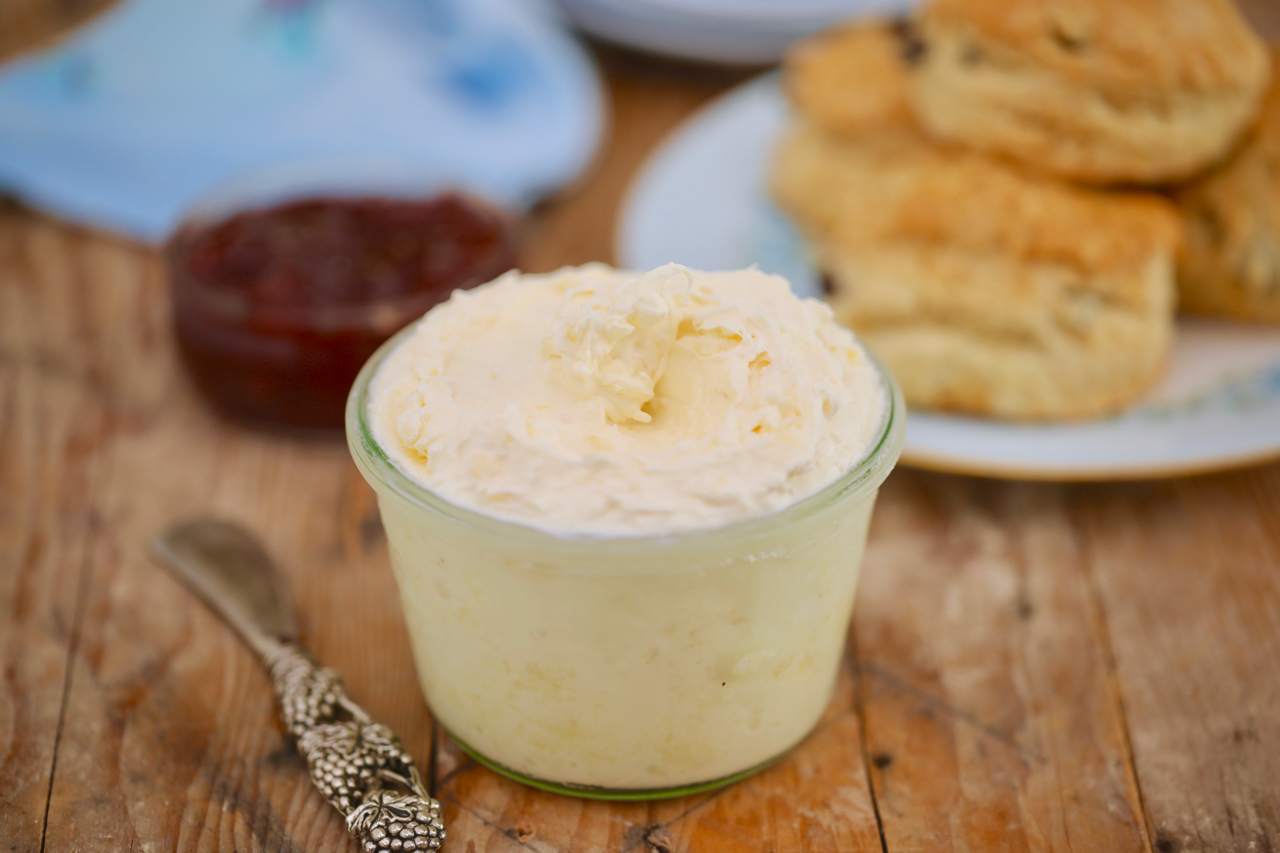
This post may contain affiliate links. Please see my full disclosure for details.
Hi Bold Bakers!
WHY YOU’LL LOVE THIS RECIPE My homemade Clotted Cream Recipe is the real deal that can be done in 3 ways and just a 1-ingredient ride to heaven!
Beyond just giving you the recipes to bake Bold desserts, my goal is to equip each and every one of you with the know-how and techniques to bake with confidence anytime, anywhere. Once you learn the tricks of the trade and nail down these basics, it’s from there that you can really get creative and have fun in the kitchen.
I’m thrilled to see how excited you are ( just like me!) about making everything from scratch, like Homemade Cream Cheese , Condensed Milk, and more Bold Baking Basics!
IMPORTANT NOTE: This recipe was updated and improved on 02/28/23, to include TWO NEW methods, answers to the most frequently asked questions, Pro Chef Tips, and more related recipes to enjoy clotted cream.
Table of Contents
- What is Clotted Cream?
- Tools You Need
- Clotted Cream Ingredient
- What’s the Difference Among Clotted Cream, Double Cream and Butter?
- How to Make Clotted Cream
- How to make clotted cream in a slow cooker or instant pot?
- FAQs
- Gemma’s Pro Chef Tips
- More Ingredients From Scratch!
What is Clotted Cream?
Clotted cream, or English Clotted Cream, is a classic British spread and is reckoned that it was first introduced to England by Phoenician settlers around 2000 years ago.
South West England in particular the countries of Devonshire and Cornwall have a long history with clotted cream and are always known for clotted cream production. Hence, Devonshire cream (Devon Cream) or Cornish cream is another name to honor Clotted Cream
Clotted Cream is a thickened cream with fat content around 68%. Heat causes the cream and fat rise to the top forming clots and are skimmed off. This is the clotted cream.
Tools You Need
- Large oven-safe baking dish (9*14 inches) or
- Slow Cooker or
- Non-reactive Heavy Bottomed Pan (ceramic, enamel, glass or stainless steel)
Clotted Cream Ingredient
- Heavy (whipping) cream or double cream: The higher-fat layer of dairy product skimmed from milk before homogenization is cream. Heavy cream with fat content of 36% or double cream with fat content of 48% will work well in making clotted cream.
What’s the Difference Among Clotted Cream, Double Cream and Butter?
They vary in production, appearance and consistency.
The higher-fat LIQUID layer skimmed from milk is Double Cream. The base of clotted cream!
The conjoined milkfats is Butter. It forms from agitating or churning double cream (or heavy cream), which damages these membranes and allows the milk fats to separate. Butter is SOLID when refrigerated and turns SOFT spreadable at room temperature.
BAKING double cream (or heavy cream) at a low temperature for a long time thickens up the cream to Clotted Cream with a fat content around 68%. Its texture is similar to creme fraiche or softened butter with a rich nutty and slightly sweet flavor.
How to Make Clotted Cream
Pour cream into an oven-safe large surface dish which will help to get the most clotted cream.
Bake at 175°F/80°C on the middle rack for a full 12 hours or until it forms a bubbly yellow surface with a thick consistency. Allow to cool at room temperature (around 76°F/24°C) then cover and put in the refrigerator overnight for it to set.
If you start the process at night, make sure your oven doesn’t switch off after a certain amount of hours.
(Find the full written recipe card below.)
How to Make Clotted Cream in a Slow Cooker/Crock-Pot/Instant Pot or on the Stove Top?
(SLOW COOKER) Pour around 1-2 inches of cream into a heat/shock-resistant dish then put the bowl into your pot. Fill the inner pot of your slow cooker/Crock Pot/ Instant Pot with 1-2 inches of water which can slightly float the cream bowl. Cook with the lid on at the lowest setting or 175°F/80°C for 12 hours in total or it forms a bubbly and yellow surface.
NOTE that you do need to keep a close eye on it throughout the whole process! Add more hot water to retain the water level when needed and slightly open the lid to control the temperature making sure the water does not come to a boil (212°F/100°C is too hot for clotted cream).
(STOVE TOP) Cook cream in a large non-reactive and heavy-bottomed pan at lowest heat for 30 minutes or so. Stir often to prevent cream from scorching. Once the cream has been reduced by roughly 1/ 3 or it forms a bubbly and yellow surface, remove from the heat and set aside to cool.
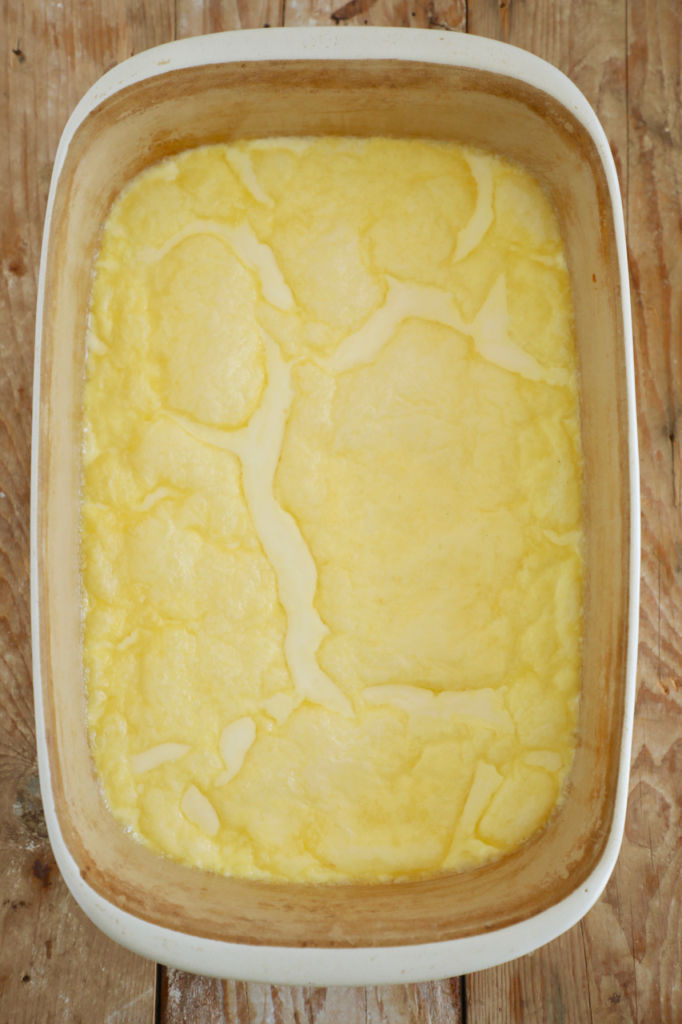
FAQs
Why is my clotted cream yellow?
It is normal if the clotted cream turns out yellow, especially from this homemade Easy Clotted Cream recipe. Due to the high amount of butterfat in the cream, the final product takes on a buttery pale yellow color. But I can assure you the flavor and texture of the cream will be perfect.
Why is my clotted cream runny?
My Clotted Cream recipe bakes the cream low and slow then allows it to set in the fridge overnight. After the milk solids separate to the bottom, what rises to the top is the clotted cream.
In this process, the little liquid left behind is similar to the whey from making homemade cheese. My suggestion is to gently spoon off the solid cream from on top and leave as much of the liquid behind as possible. The liquid left behind can be used to make my Irish Scones to accompany your clotted cream and jam.
How to Use Clotted Cream?
In my opinion, besides being the quintessential part of cream tea, clotted cream is also a must-have with strawberry jam, raspberry jam or marmalade in scones, English Muffins, Crumpets, or other quick bread.
You may not know this homemade clotted cream recipe also makes the secret ingredient to elevate chocolate truffles and caramel fudge candy! Also goes well in pies in place of heavy cream!
Gemma’s Pro Chef Tips
- You can freeze clotted cream for longer shelf life, but beware of that it tends to get grainy, crumbly or icy once defrosted.
- If you use the oven method, make sure your oven doesn’t switch off after a certain amount of hours. Start the process at night so it will be ready in the morning.
- If you use the slow cooker method, it’s best to start the process in the early morning. Because it needs constant care and 2 hours’ cooling time before storing in the fridge.
Make More Ingredients From Scratch!
IMPORTANT NOTE: This recipe was updated and improved on 02/28/23, to include TWO NEW methods, answers to the most frequently asked questions, Pro Chef Tips, and more related recipes to enjoy clotted cream.
Don’t forget to follow Bigger Bolder Baking on Facebook, Instagram, and Pinterest for more baking ideas!
Watch The Recipe Video!
Easy Clotted Cream Recipe (How to Make Clotted Cream 3 Ways)
Ingredients
- 2 pints (1 liter) heavy cream (not ultra-pasteurized cream) high fat content
Instructions
Making Clotted Cream In The Oven
- Pre-heat your oven to 175°F (80°C)
- Pour your cream into a large 9x14in oven safe dish. You want a dish with a large surface area so you get the most clotted cream.
- Place in the center of the oven and bake for a full 12 hours. I know this is a long time, but once you taste it, it’s well worth it. I put mine in the oven overnight so it's ready in the morning. Note: Make sure your oven doesn’t switch off after a certain amount of hours.
- After the 12 hours remove your dish from the oven. You will notice a bubbly, yellow surface. This is the clotted cream.
Making Clotted Cream In a Slow Cooker/Crockpot/Instant Pot
- Pour around 1-2 inches of cream into a heat/shock-resistant dish then put the bowl into your pot.
- Fill the inner pot of your slow cooker/Crock Pot/ Instant Pot with 1-2 inches of water which can slightly float the cream bowl.
- Cook with the lid on at the lowest setting or 175°F/80°C for 12 hours in total or it forms a bubbly and yellow surface. NOTE that you do need to keep a close eye on it throughout the whole process! Add more hot water to retain the water level when needed and slightly open the lid to control the temperature making sure the water does not come to a boil (212°F/100°C is too hot for clotted cream).
Making Clotted Cream On The Stove Top
- Pour cream in to a large heavy-bottomed and non reactive pan (ceramic, enamel, glass or stainless steel), to create as much cooking surface as possible for even and steady heat.
- Cook the cream at the lowest heat for roughly 30 minutes, stirring every so often to make sure the cream does not get scorched at the bottom.
- Once the cream has been reduced by roughly 1/ 3 or it forms a bubbly and yellow surface, remove from the heat and set aside to cool.
Cooling and Storing
- Allow to cool at room temperature then cover and put in the fridge overnight for it to set.
- The next day, spoon the firm clotted cream into a jar leaving the liquid that has separated behind. You can use this liquid in the making of scones.
- Spread the clotted cream on scones with jam. Store your clotted creaminess an airtight container in the fridge for up to 5 days.
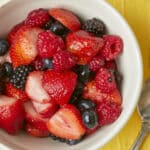
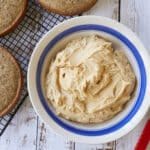
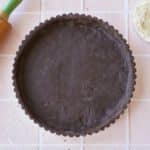
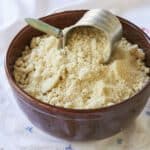
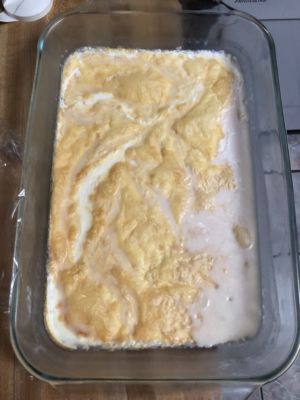
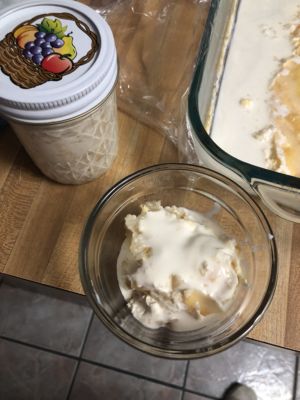
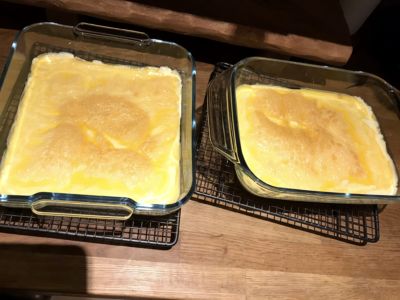
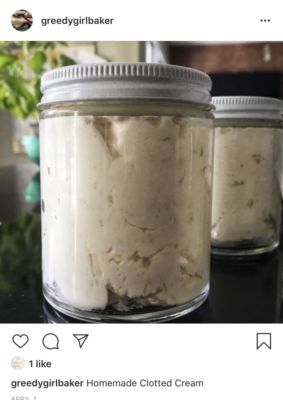
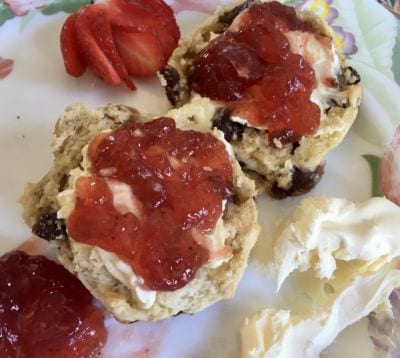

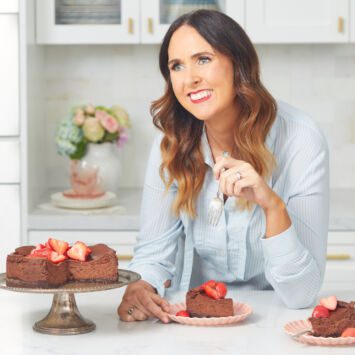


Used UK Double Cream and my Gas oven was set to the Keep Warm setting (below Gas Mark 1, and using an oven thermometer, I kept it at 80 degrees for 12 hours by having a wooden spoon keeping the door slightly open. It went a lovely buttery yellow and put it in the fridge overnight, and when I went to skim off the top, I realised there was NO liquid underneath, just ALL beautiful clotted cream – thank you for a brilliant recipe!
Hi all ! I would like to add an alternative heat source to make your Clotted cream. If you have arectangular dehydrator with removable racks use it! I make great CC in my Excaliber dehydrator. Just set the timer for 12 hrs and temp to top and overnight you have Clotted cream. Put it in the fridge and let set. Skim off the CC. I have even done a much smaller second heating of the same cream and got a second batch of CC !!!!! AWESOME !!!
My family loves clotted cream. All of the cream we can get near us is ultra pasteurized. This will definitely work, you will just not have as high a yield. At 175, my oven does an auto shutoff, so I do 12 hours at 180. However, I now have two full pounds of fresh clotted cream waiting for the scones I will make tomorrow for Christmas morning breakfast. That took two quarts of heavy ultra pasteurized cream from Brookshires (40% milkfat). I had four cups of liquid cream left, but fortunately, we all love cream in our coffee. So it… Read more »
Dearest Gemma, This is a long overdue amateur baker’s love letter. With your wonderful recipes, you have singlehandedly made every single dessert cookbook I own obsolete. This amazing clotted cream (and accompanying best ever Irish scones recipe) are the latest in a string of ever successful and delicious treats I have made for myself, my partner (who is a massive fan of your best ever chocolate chip cookies by the way), my friends and my family. I had never dreamed of making clotted cream before (or peanut butter or condensed milk or ice cream or so many other wonderful things).… Read more »
Hi, we fell head over heels for Clotted Cream on a recent trip to the U.K. and Ireland. I have tried three times to make this recipe (twice in the oven and once in a crock pot) unsuccessfully. 😪 Each and every time it looks and tastes wonderful, the consistency is the problem. It comes out crumbly and near impossible to spread. Where could I have gone wrong?
To thicken the cream, even more, you can add a couple of tablespoons Corn Starch to the cream before placing it in the Oven.
Hi
I really want to make this today. Can I use a 9×13 deep baking tray or does it have to be GLASS dish? If glass only can I use smaller 9 x 8 but 2 of them in the oven? And should the oven be fan oven steering or just the top/bottom setting with NO fan? 80 Celsius
Can it be just be regular pasteurized and not ultra. Or does it need to be not pasteurized?
I think some of the issues people are having may be due to using fan assisted oven settings which would result in faster evaporation of the water content in the cream which obviously means it would require fewer hours to have the consistency you are after.
Well, as all the Heavy Cream / Wipping Cream in NC seems to be Ultra-Pasteurized. It’s a fortunate thing Amazon sells Clotted Cream as well as Double Cream.